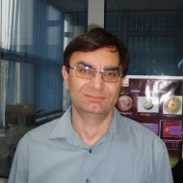Recent Advances in the Design and Applications for Magnetoelastic and Electroelastic Actuators
A special issue of Actuators (ISSN 2076-0825). This special issue belongs to the section "Miniaturized and Micro Actuators".
Deadline for manuscript submissions: 31 May 2024 | Viewed by 1427
Special Issue Editors
Interests: semiconductor and electrochemical microsensors; sensitive element and electronic conditioning systems for sensors; applications of magnetic nanofluids in the field of sensing (as sensing element), microactuation and energy security; piezo-ceramic micro-actuators; electrostrictive actuators; magnetostrictive actuators; electromagnetic actuators; electrodynamic and electrothermal actuators; "harvesting energy" type devices
Special Issues, Collections and Topics in MDPI journals
Interests: electromagnetism; heat and mass transfer; field-substance interactions; energy conversion and sources; multiphysics modeling; structural (constructal) design
Special Issue Information
Dear Colleagues,
The field of actuation systems is very dynamic and profoundly impacts the development of engineering sciences. The development of new materials with piezoelectric, magnetostrictive, and electrostrictive properties, as well as new polymeric materials from the category of elastomers, has generated the possibility of developing new actuators. This Special Issue will cover original experimental and applied research on electroelastic, magnetoelastic, and thermoelastic actuating systems. The scope covers actuators for various disciplines and industries, from advanced manufacturing to automotive, aircraft, aerospace, marine, medical instruments, and robotics. Miniaturization and increasing the precision of electroelastic, magnetoelastic, and thermoelastic actuators are essential requirements in current practical applications. This Special Issue aims to reveal the current efforts and progress in this area. You are welcome to submit a manuscript for this Special Issue. Academic researchers and authors from the industry who are involved in the field are invited to contribute original research articles and reviews (including comprehensive assessments on complete actuator products).
Research areas may include (but are not limited to) the following:
- Electromagnetic actuator;
- Magnetostrictive actuator;
- Piezoelectric actuator;
- Electrostrictive actuator;
- Polymer-based actuator;
- Electrostatic actuator;
- Thermoelastic actuator;
- Materials for mechanically driven actuators.
We look forward to receiving your contributions.
Dr. Lucian Pîslaru-Dănescu
Prof. Dr. Alexandru M. Morega
Guest Editors
Manuscript Submission Information
Manuscripts should be submitted online at www.mdpi.com by registering and logging in to this website. Once you are registered, click here to go to the submission form. Manuscripts can be submitted until the deadline. All submissions that pass pre-check are peer-reviewed. Accepted papers will be published continuously in the journal (as soon as accepted) and will be listed together on the special issue website. Research articles, review articles as well as short communications are invited. For planned papers, a title and short abstract (about 100 words) can be sent to the Editorial Office for announcement on this website.
Submitted manuscripts should not have been published previously, nor be under consideration for publication elsewhere (except conference proceedings papers). All manuscripts are thoroughly refereed through a single-blind peer-review process. A guide for authors and other relevant information for submission of manuscripts is available on the Instructions for Authors page. Actuators is an international peer-reviewed open access monthly journal published by MDPI.
Please visit the Instructions for Authors page before submitting a manuscript. The Article Processing Charge (APC) for publication in this open access journal is 2400 CHF (Swiss Francs). Submitted papers should be well formatted and use good English. Authors may use MDPI's English editing service prior to publication or during author revisions.
Keywords
- electromagnetic actuator
- magnetostrictive actuator
- piezoelectric actuator
- electrostrictive actuator
- polymeric actuator
- electro-magnetorheological elastomer
- electrostatic actuator
- thermoelastic actuator
- thin-film/planar manufacturing processes
- MEMS technology






